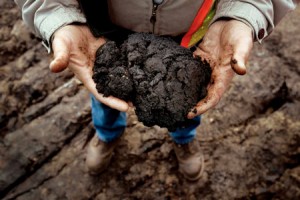Will Keystone XL Spoil Your Holidays?
 One of the sadder rituals in the nation’s capital is the “December surprise,” whereby the administration in power makes controversial pronouncements right around a major holiday. I’d be willing to bet all the candy canes in my stocking that the U.S. State Department, which is currently overseeing an environmental review of the controversial Keystone XL pipeline, will do just that before the year is out. It will be difficult for State to please everybody, and either polluters or conservation groups are going to be pretty unhappy. Ominously, State has a history of coming up very very short on it’s Keystone XL studies.
One of the sadder rituals in the nation’s capital is the “December surprise,” whereby the administration in power makes controversial pronouncements right around a major holiday. I’d be willing to bet all the candy canes in my stocking that the U.S. State Department, which is currently overseeing an environmental review of the controversial Keystone XL pipeline, will do just that before the year is out. It will be difficult for State to please everybody, and either polluters or conservation groups are going to be pretty unhappy. Ominously, State has a history of coming up very very short on it’s Keystone XL studies.Why the State Department? State Department won’t have the final word of course, that’s ultimately going to be up to newly re-elected President Barack Obama. But State’s decision could offer clues about where the President is heading on energy policy over the next four years, and his final decision on the Presidential Permit for Keystone XL is his prime opportunity to signal he is serious about addressing high carbon fuels like tar sands that are speeding climate disruption.
State’s decision will come in the form of a “supplemental environmental impact statement” (SEIS) for the pipeline segment that crosses over Canada and runs to Steele City, Nebraska.
State, rather than the Environmental Protection Agency or the Energy Department, is charged with running the environmental assessment because the mega-pipeline crosses an international boundary with Canada. President Obama must decide if this pipeline is in the national interest.
Why Keystone is a big big deal. The administration’s Keystone XL decision represents a pivotal moment in the direction of energy policy for the nation because approving the pipeline for one of the dirtiest fuels on the planet will do nothing to move the nation to a cleaner, less-polluting, less carbon-intensive future. Quite the opposite, Keystone XL’s dirty tar sands could ‘crowd out’ rapidly growing markets for renewable energy like wind and solar power. It will lock in more dependence on imported oil and metastasize the destruction of natural resources already well underway in Canada’s boreal forests.
Energy giant TransCanada originally proposed the Keystone XL pipeline to transport 800,000 barrels daily of tar sands oil through five states from Alberta, Canada, 1,700 miles to Gulf of Mexico refineries in Texas. Tar sands oil is a type of heavily-polluting, crude oil or bitumen that must be diluted before it can be pumped through pipelines. Bitumen is more corrosive on pipelines and it is more toxic and more difficult to clean up than conventional oil.
How did we get here? Last December, Congress sent President Obama a bill requiring a final decision on the Keystone permit. The President was lauded by conservationists when in mid-January this year, he rejected the application saying Keystone hadn’t been adequately studied. He also invited TransCanada to resubmit a new application.
After the administration gave the go-ahead for a southern segment of Keystone XL that will run to the Gulf Coast, State suggested that TransCanada reroute the northern segment of the pipeline to avoid sensitive areas in the Great Plains, especially the Sandhills and the Ogallala aquifer which makes Midwest agriculture possible and supplies drinking water to millions. On May 4, 2012, TransCanada filed a new application with the U.S. Department of State revising and shortening the previously proposed route.
Currently, the state of Nebraska is putting the finishing touches on an evaluation of the new proposal and the State Department is preparing a supplemental environmental impact statement (SEIS) on the May application.
The State Department’s website says, “We will consider this new application on its merits … this involves consideration of many factors, including energy security, health, environmental, cultural, economic, and foreign policy concerns.” Let’s hope they mean it, but many conservationists remain concerned State’s focus will fall in line with TransCanada’s wishes: namely to have a very narrow review that only looks at the rerouted portion of the pipeline and little else.
Seeing the forest for the trees. Of course Keystone XL will have profound impacts that State or ultimately the President need to address. Here’s just a few things the new SEIS should include to do justice to generations of Americans who will have to live with this pipeline and its pollution for its half century service life:
•An examination of all environmental impacts, including air, water and climate and refinery emissions;
•An analysis of impacts on wildlife, facts ignored in the first EIS, including threatened and endangered species, especially the Whooping Crane and Sandhill Crane whose migratory flight would cross Keystone at numerous points.
•An honest of accounting of the drawbacks including: pipeline spill risks, jobs that could be lost in renewable energy here in the U.S., and state-by-state impacts on energy prices for states likely to see price hikes from Keystone.
•A respectful consultation with impacted communities and tribal interests who will suffer in the event of a catastrophic spill.
Years from now, we will likely look back on the Keystone XL pipeline decision and see it as a turning point in national energy policy. Our first glimpse of that future may depend on whether State is naughty or nice this holiday season.
You can return to the main Market News page, or press the Back button on your browser.

